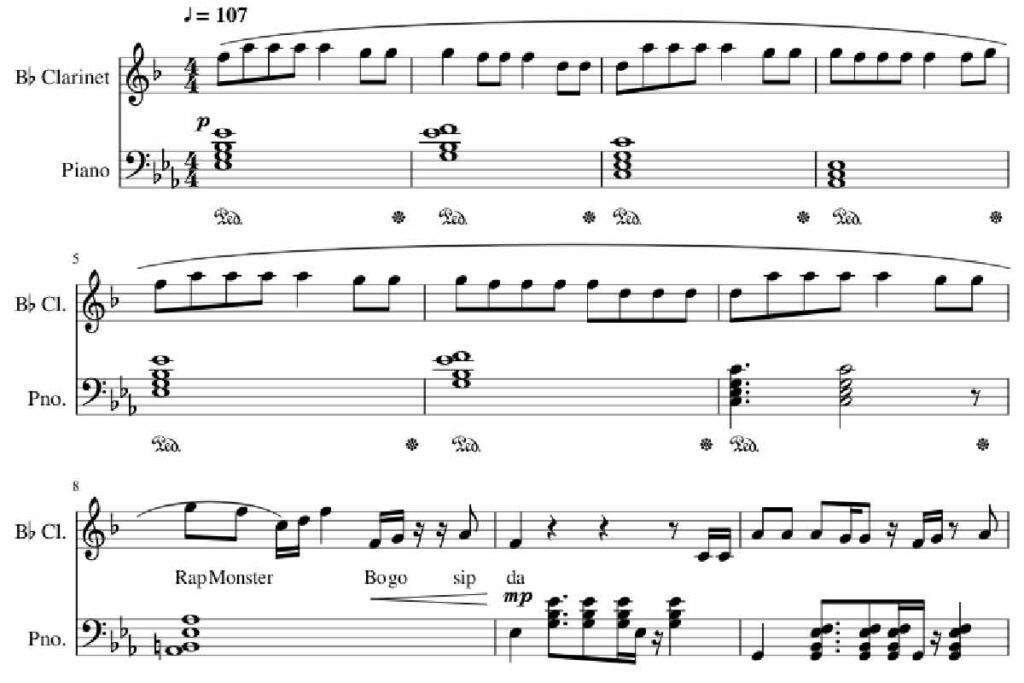
The Slur In Music Notation
The slur in music is a fundamental element of musical notation that plays a significant role in shaping the interpretation and performance of a composition.
The slur is a highly important symbol in music notation as it dictates how notes should be played or sung.
Music notation is full of various symbols, such as slurs, that serve as guides for the proper interpretation of the composer’s intentions.
These symbols also assist musicians in reading and writing music on paper for documentation and distribution.
The more familiar a musician is with these music notation symbols, the easier it becomes to interpret sheet music. One of these symbols is a slur.
In this article, we will explore the slur as one of the music notation symbols from various perspectives. But before we delve deeper, let’s begin by defining what a slur is.
What Is Slur In Music Notation
A slur is a musical symbol represented by curved lines and is usually placed over two or more musical notes to group them together.
A slur can span across multiple notes that are either at the same pitch or at different pitches. It’s important to note that a slur is different from a tie, which only connects two or more notes of the same pitch.
A slur is a musical symbol represented by curved lines, typically placed over or under two or more musical notes to group them together.
However, when several notes are slurred together, it is possible to have tied notes within that group. Each note within the slur maintains its original time value unless it is tied to another note.
How Note can be connected with A Slur Mark

A slur in music notation is represented by curved lines that connect consecutive notes in staff music notation.
The pitch of the notes does not matter when using a slur; what matters is that there are two or more notes arranged in a sequential manner.
Slurs can be placed either above or below the music notes. However, a general rule is to position them above the note heads when most of the stems of the notes face downward.
Conversely, slurs should be placed below the note heads when most of the stems point upward.
In the diagram above, we can observe that the slurs were positioned under the music notes when the stems of the notes pointed upward.
Similarly, the slur was placed above the notes when the stems of the notes pointed downward.
The Functions Of Slur In Music Notation

Let’s now discuss the purpose of a slur in music notation. What does a slur do in music notation?
In sheet music, a slur is a symbol used to indicate that notes should be played or sung smoothly with legato articulation.
Legato is a musical technique, and the slur is the notation marking for legato.
The symbol itself is a curved line placed over two or more notes. In a practical terms, it is used to show the legato style of playing or singing.
However, sometimes notes under a slur can also be played with staccato articulation.
Additionally, the slur serves as a phrasing mark in music. A group of notes joined by a slur forms a musical idea called a phrase.
A phrase represents a complete thought or idea within the music.
In classical music, phrases often have balanced lengths. But in contemporary music, phrases can be asymmetrical and of varying lengths.
The primary function of a slur as a phrase mark is to indicate a section of music that should be played smoothly and connected using legato articulation.
For comprehensive musical expression, the slur is used in conjunction with other articulations. However, the meaning of slurs can vary among different instruments and singers.
Generally, a slur indicates that all notes should be played or sung as one unit. For string instruments, it requires a smooth bowing or stroke. Similarly, for vocals or wind instruments, the slur serves as an instruction for breathing.
Slur for String Instruments
Slurs are commonly used in string instrument pieces to instruct the player to perform different notes or pitches marked with the slur in a smooth and connected manner.
In this context, the player changes slurred notes using their left hand while maintaining a continuous bowing motion with their right hand in one direction.
For example, in a musical piece for instruments like the cello or violin, every note grouped together with a slur mark should be played with a single bowing motion.
Therefore, the bow should ideally continue in the same direction to express the slur. The change in bow direction occurs only after the completion of the slur mark.
Slur for wind instruments

When it comes to wind instruments, a slur on a group of notes universally signifies two things:
Firstly, it indicates that all the notes under the slur should be played without using the tongue to re-articulate each note.
Secondly, it means that the player should play all the slurred notes smoothly within a single breath.
Therefore, every note within a slur should be played smoothly without re-articulation.
Typically, woodwind or brass players use tonguing to articulate each note. They do this by making a silent “tee” against the roof of their mouth or the reed.
However, to properly articulate slurred notes, they only use tonguing at the beginning of the first note within the slurred group. They then play the remaining notes within the slur without tonguing while maintaining a steady airflow.
So, when playing slurred notes, it is important to keep the air flowing without using the tongue after the first note. Simply move your fingers to the next note in the slur pattern.
However, the trombone and similar instruments that utilize a slide to control the pitch of notes are exceptional cases.
In reality, trombonists must re-articulate every note within a slur to avoid glissandos between the notes.
Therefore, for trombonists, a slur indicates playing all the slurred notes as connected as possible, despite using tonguing between the notes.
Slur for vocal music

The usage of slurs in vocal music differs from that in string or wind instruments.
In vocal music, slurs are employed in relation to the words being sung and for the proper phrasing of a musical passage.
Typically, slurs in vocal music indicate sharing two or more notes with a single syllable. The slur begins where the syllable is first vocalized and ends where the syllable concludes.
Sometimes, people refer to this effect as an extra note, but in musical terms, it is known as melisma.
Therefore, in vocal music, slurs are commonly used to group together notes that correspond to a single syllable of the text.
This means that multiple notes are sung under one syllable in vocal music.
Slur For Vocal Phrasing

Furthermore, the slur is occasionally used as a vocal phrase marker. It groups together a complete phrase of notes and indicates that all the slurred notes should be connected.
This means that all the notes under the slur should be sung as one musical phrase. So, the singer needs to take a breath where the phrase mark ends.
In other words, a slur is added to a group of notes to indicate singing with proper phrasing and breath control.
It is important to note that a slur is rarely used in vocal music to notate general phrasing. Instead, its primary purpose is to indicate melisma. In certain cases, a composer or publisher may use a dotted slur to signify a non-intuitive phrasing effect.
This differentiation is made to ensure that the melisma slur and the phrasing slur are visually distinct from each other.
Final Note
The slur in music plays an essential role as it serves as a fundamental element of musical notation. Basically, it influences the interpretation and performance of a composition.
Musicians use curved lines placed over or under groups of notes to represent the slur. This acts as a powerful tool for connecting and articulating a series of musical phrases or ideas.
By indicating the legato playing style and facilitating smooth transitions between notes, the slur enhances the expressiveness, phrasing, and overall musicality of a piece.
Its implications and instructions are unique to each context, whether it is used in string instruments, wind instruments, or vocal music.
When performers understand and effectively employ the slur in music, they bring the composer’s intentions to life. They achieve this by creating a captivating musical experience for both themselves and their audience.
At Phamox Music, we go all out for exactness and honesty. For this purpose, if by any means you found any possible glitch, be it factual, editorial, or something that we need to update, kindly contact us.
If you find the information provided in this post, Slur In Music, interesting and helpful, kindly share it with someone you know who might need it.








Your information is good, and the written music examples are very helpful. However, this article needs editing by a native English speaker who is also a good writer. It is full of grammatical and style errors that make it difficult to read, and in some places impossible to understand.
Thank you for your sincere feedback, Jean. We have made some improvements to the article. Please review the article again.
You can certainly see your skills within the work
you write. The arena hopes for more passionate writers such as you who are not afraid to mention how they believe.
All the time follow your heart.